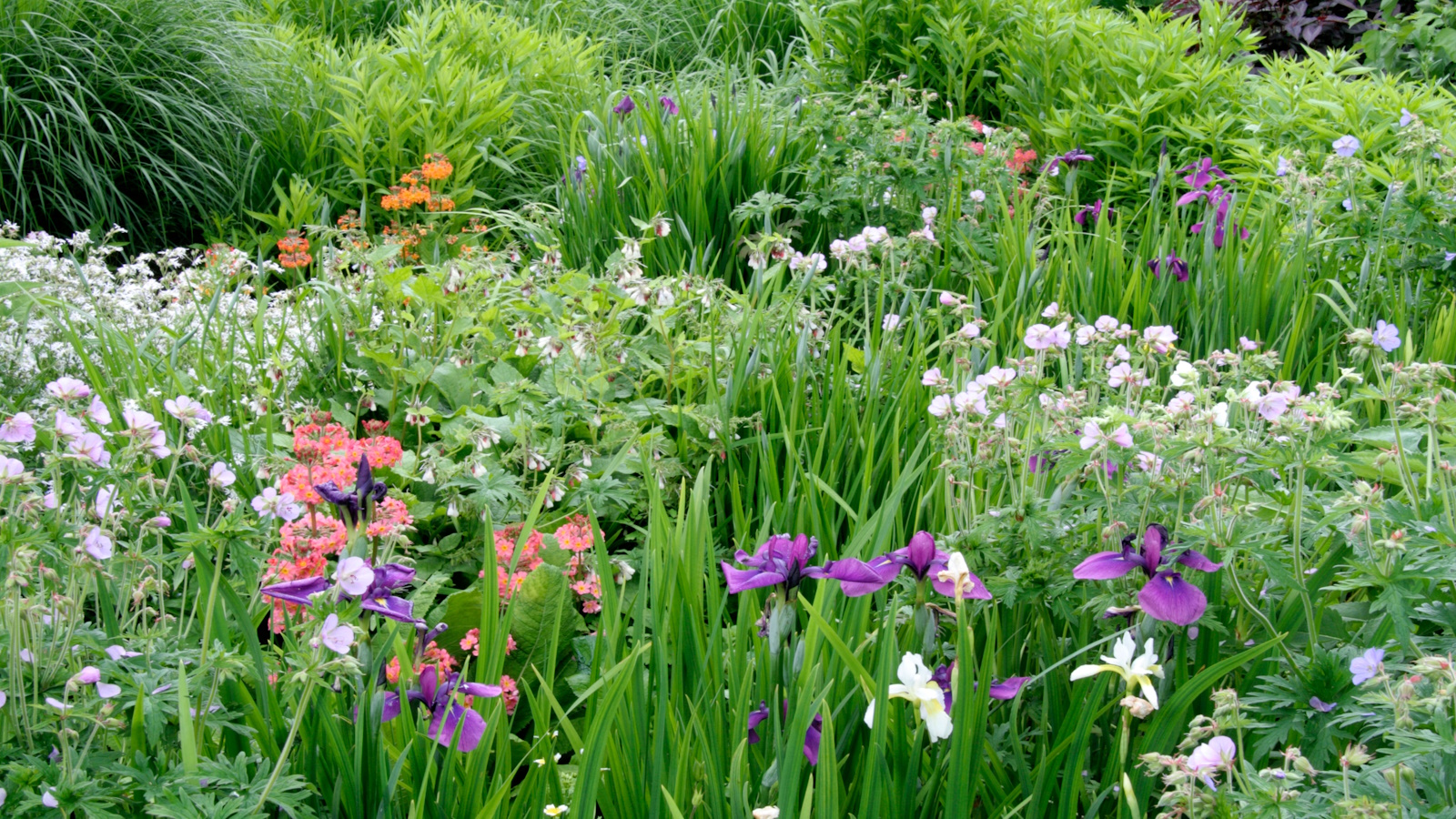
Knowing the best flood resilient plants for your yard can save you time, cash and heart ache, especially if your location is low lying. Owing to climate change and increasing urban development, weather patterns are becoming more unpredictable, with more homes being subjected to sudden downpours and prolonged heavy rainfall.
Many of our favorite plants simply cannot cope with their roots sitting in water. Instead they will quickly suffocate and rot away, leaving gaping holes in our carefully tended borders and containers. To help manage this excess of surface water, it is vital to choose plants that can help to stabilise the soil and thrive in waterlogged conditions.
Understanding how to make your yard flood resilient, is essential to future proofing your garden, so we spoke to experts, including landscape designers, horticulturalists and industry professionals, for their top plant recommendations.
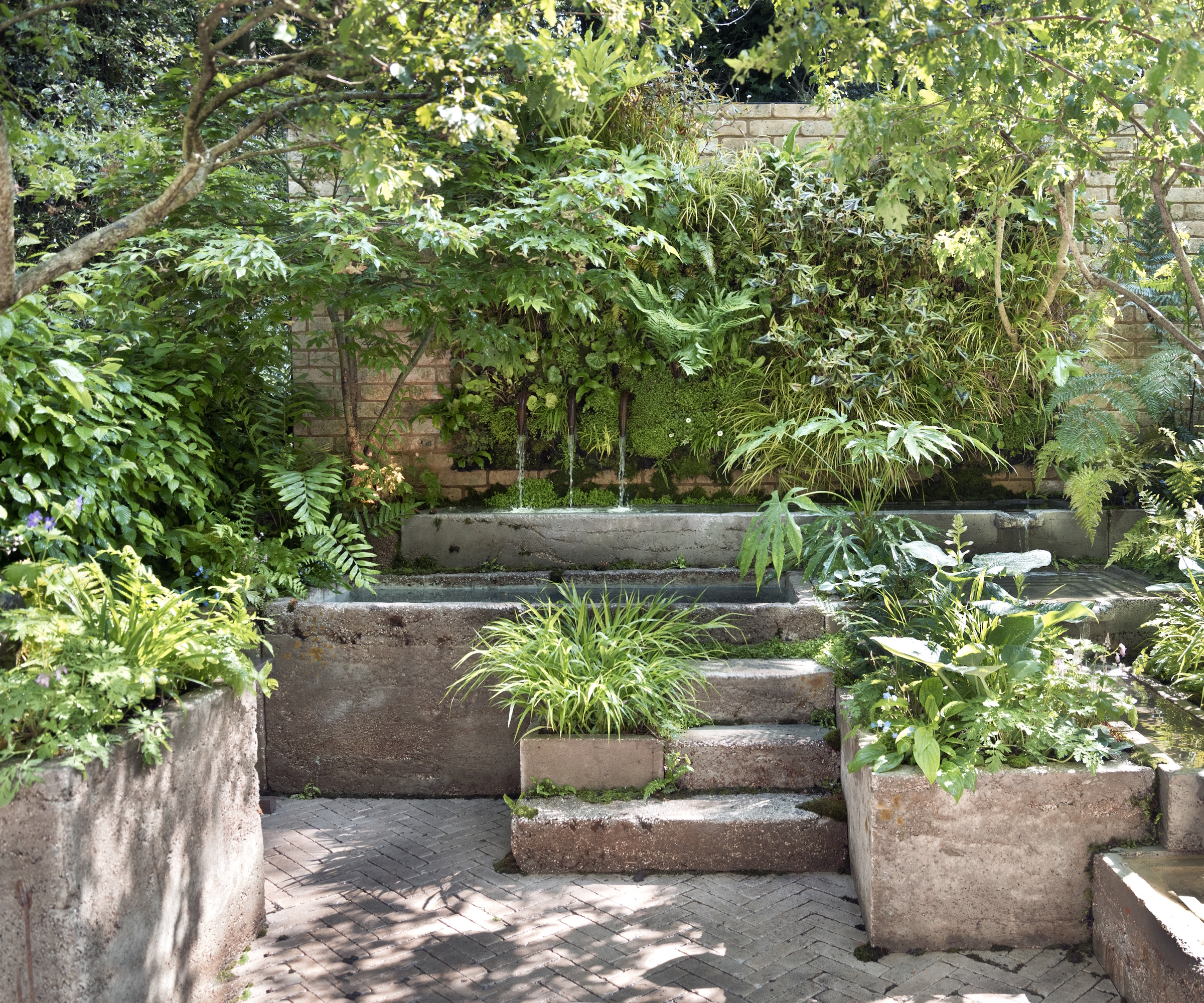
12 of the best flood-resilient plants for your backyard
If you are experiencing persistently heavier rainfall than in years gone by, all is not lost - it's just about learning how to adapt your garden. These plants love to be in or near to water, and thrive in boggier conditions.
1. Astilbe
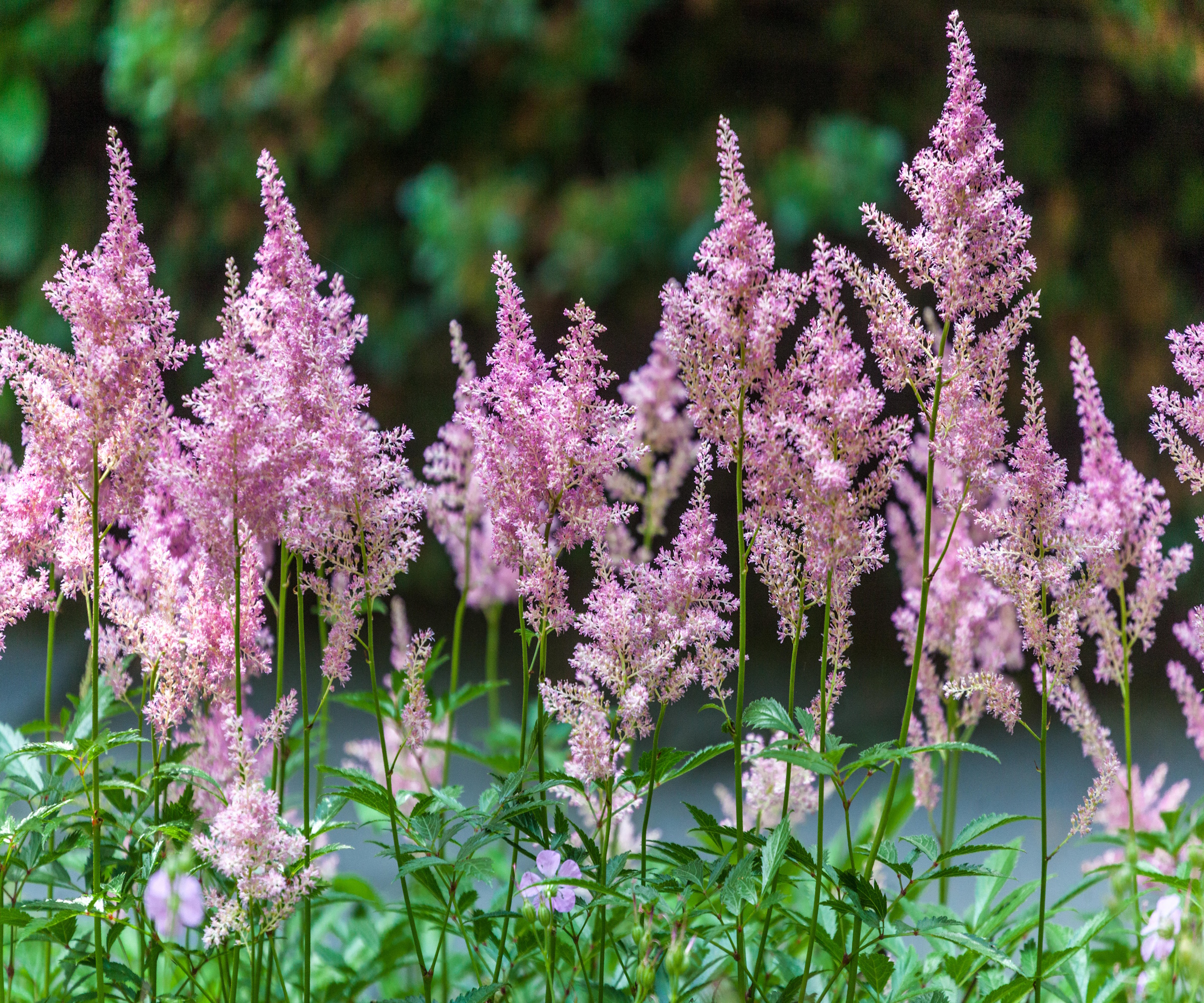
Mainstays of many bog gardens and poolsides, astilbes are instantly recognised for their vibrant plume-like blooms.
In shades of white, pink or red, these airy flowers appear during summer and are set atop upright, slender stems varying from 1ft (30cm) to 4ft (120cm) tall. Ideal for brightening up shady locations these perennials thrive in rich, damp soil.
Clump forming, astilbes are best divided every four years. A task best carried out during spring, before flowering, they are relatively simple to split and can be replanted with ease.
2. Cinnamon Fern
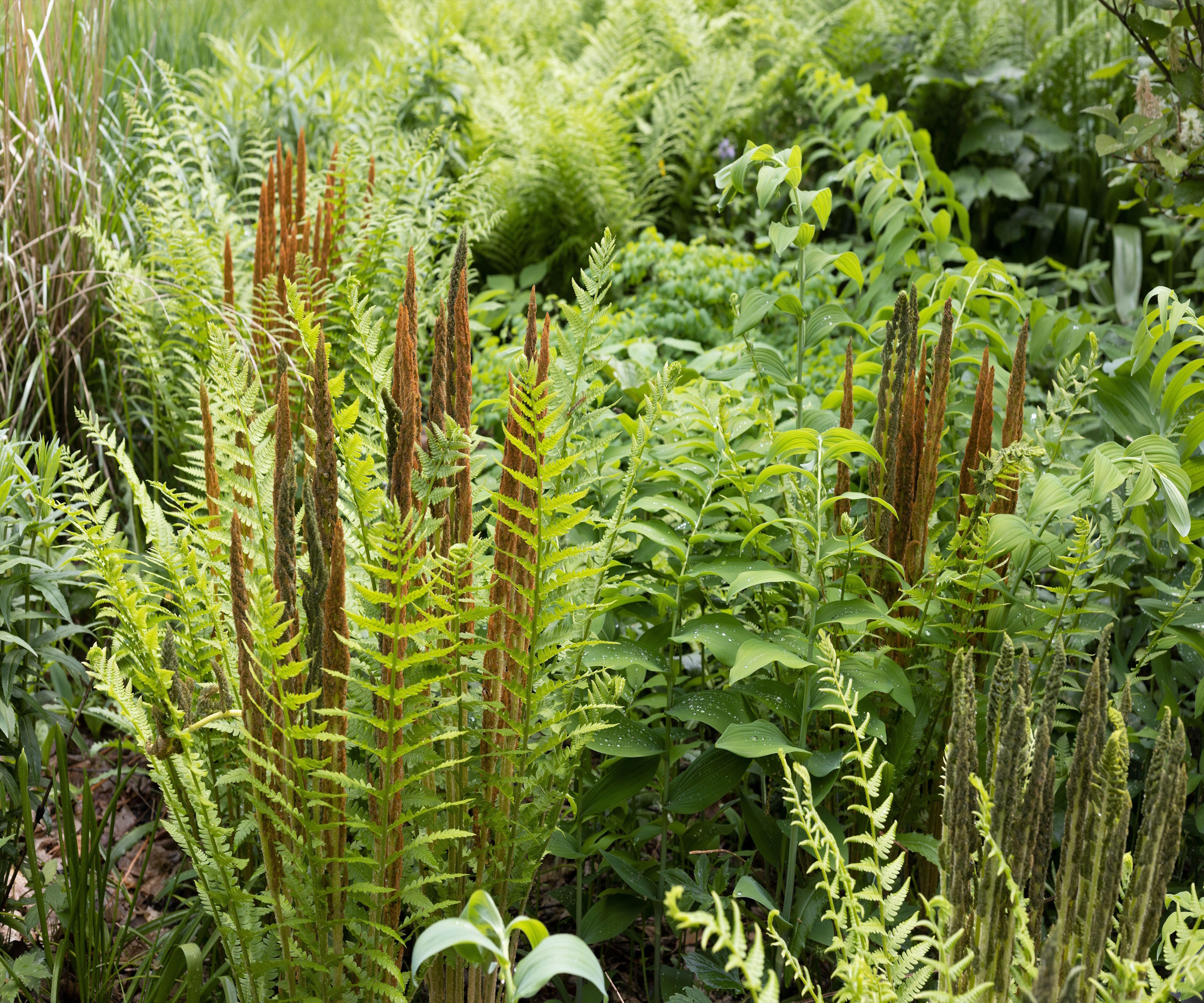
Easy to look after, happy in exposed and sheltered locations and – above all – dramatic, this deciduous fern is brilliant for adding height and form under trees, shrubs or in plant-packed borders.
Deeply cut, blue-green fronds grow up to 4-5ft (1.5m) each summer and radiate shuttlecock style around central rich-brown plumes.
Like the majority of shade loving ferns, these cinnamon ferns - available from Nature Hills- adore wet, rich soils, making them perfect for waterlogged spots. They look their best if old, tired foliage is cut away each winter.
3. Amsonia
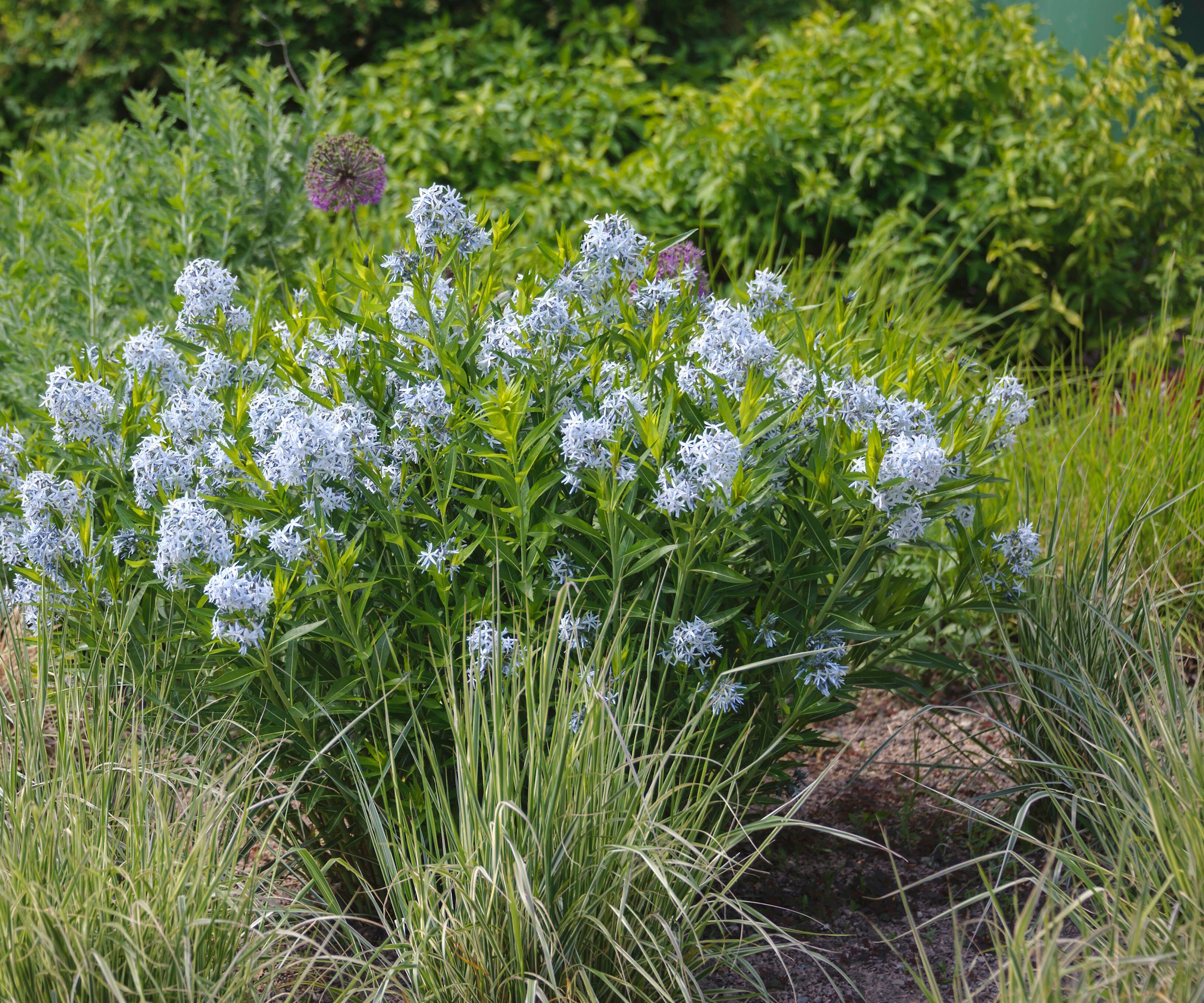
Also know as bluestars, this perennial is an underrated gem.
'This is my favourite plant ever. With gorgeous blue flowers in shades from ice to dark, appearing in late spring- early summer they look even more spectacular set against the vibrant needle and arrow-like foliage,' Irene Kalina-Jones is a partner at Outside Space NYC. 'Makes a great falling clump and the leaves turn a brilliant orange yellow in the fall.'
Reaching heights of around 19 inches (50cm), they prefer a spot in light shade to full sun and create a great contrast to other grasses and larger leaved damp loving plants such iris, as marsh marigold and candelabra primula.
Amsonia illustris is well worth looking out for, with it’s almost black, straight stems and fine starry blooms, while Amsonia ‘blue ice’ has a cloud-like mass of deep blue flowers.
4. Carex
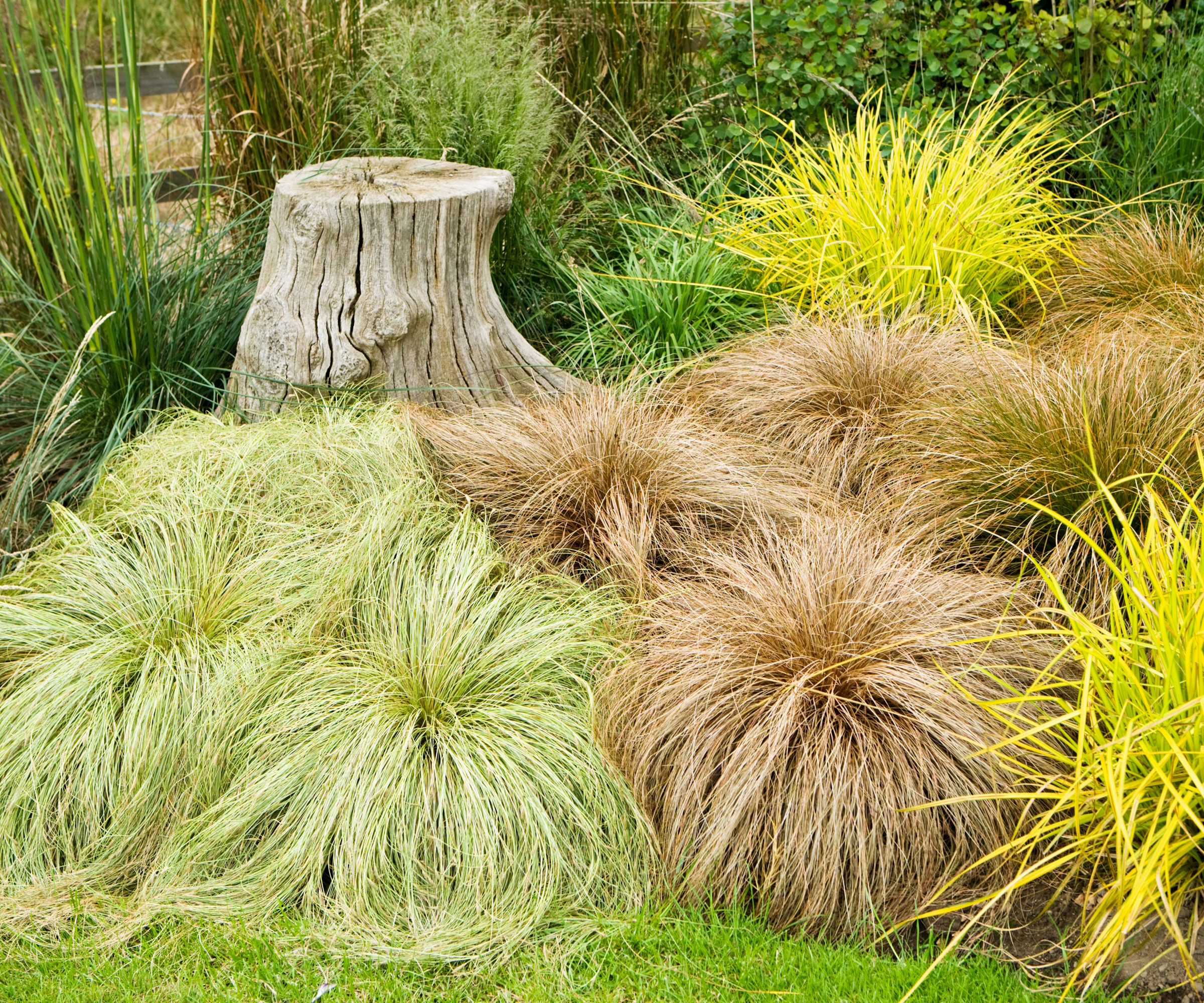
They’re perfect for adding texture and movement to a pot or border – but did you know carex are flood tolerant too.
Commonly known as sedge, there are over 2,000 types of this tough, native grass and they come in all shades of blue-grey, dark green through to bronze, purplish and cream-green. Easy to tell apart from other grasses, the blades of carex have a triangular cross-section with sharp edges, rather than being smooth, round and hollow.
'Carex has a grass-like appearance can tolerate shade and sun,' says Irene Kalina-Jones. 'It’s also a great replacement for Japanese forest grass in shade and can work for many different looks.'
Varieties that particularly love having wet feet include Carex grayi - available at Nature Hills – with its distinctive spiky green seedheads, lush green Carex muskingumensis (aka Muskingum sedge) and Carex secta with its lime fountain-like clumps tinged with brown.
5. Creeping Jenny
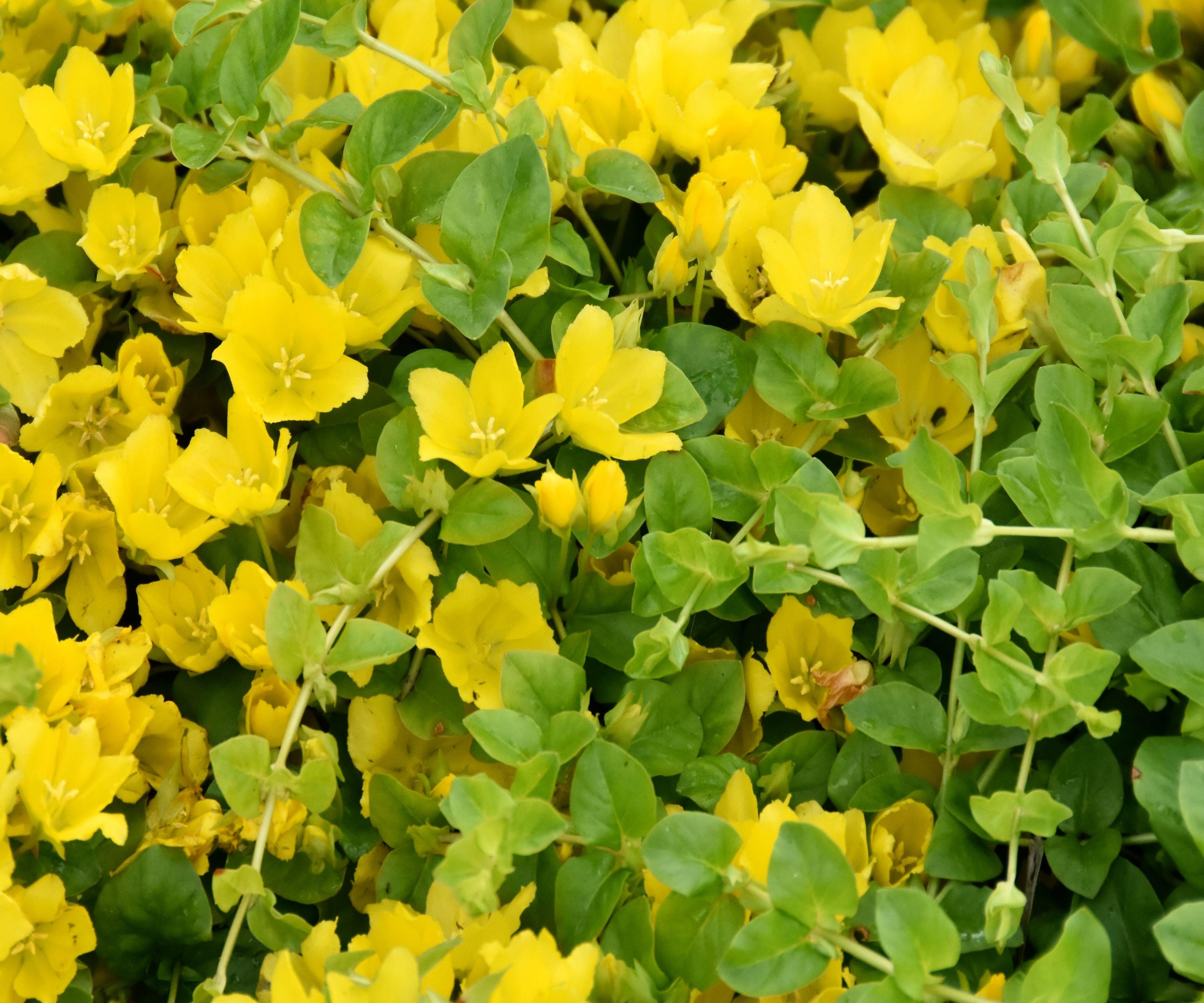
Add a dash of sunshine to woodland gardens, shady paths or stone walls with this evergreen ground lover.
Creeping Jenny is smothered in tiny yet vibrant lime leaves. The long stems will wind their way through cracks and crevices quickly forming a dense mat of foliage that’s crowned with golden cup-shaped flowers from July to August.
Reaching just 4 inches (10cm) high, it’s mat-like growth creates a brilliant habitat for beneficial insects and can happily cope with sudden downpours and waterlogged conditions.
Although it needs little upkeep to thrive, you can snip off older stems in fall to encourage fresh growth next spring and a neater shape.
6. Lady's Smock
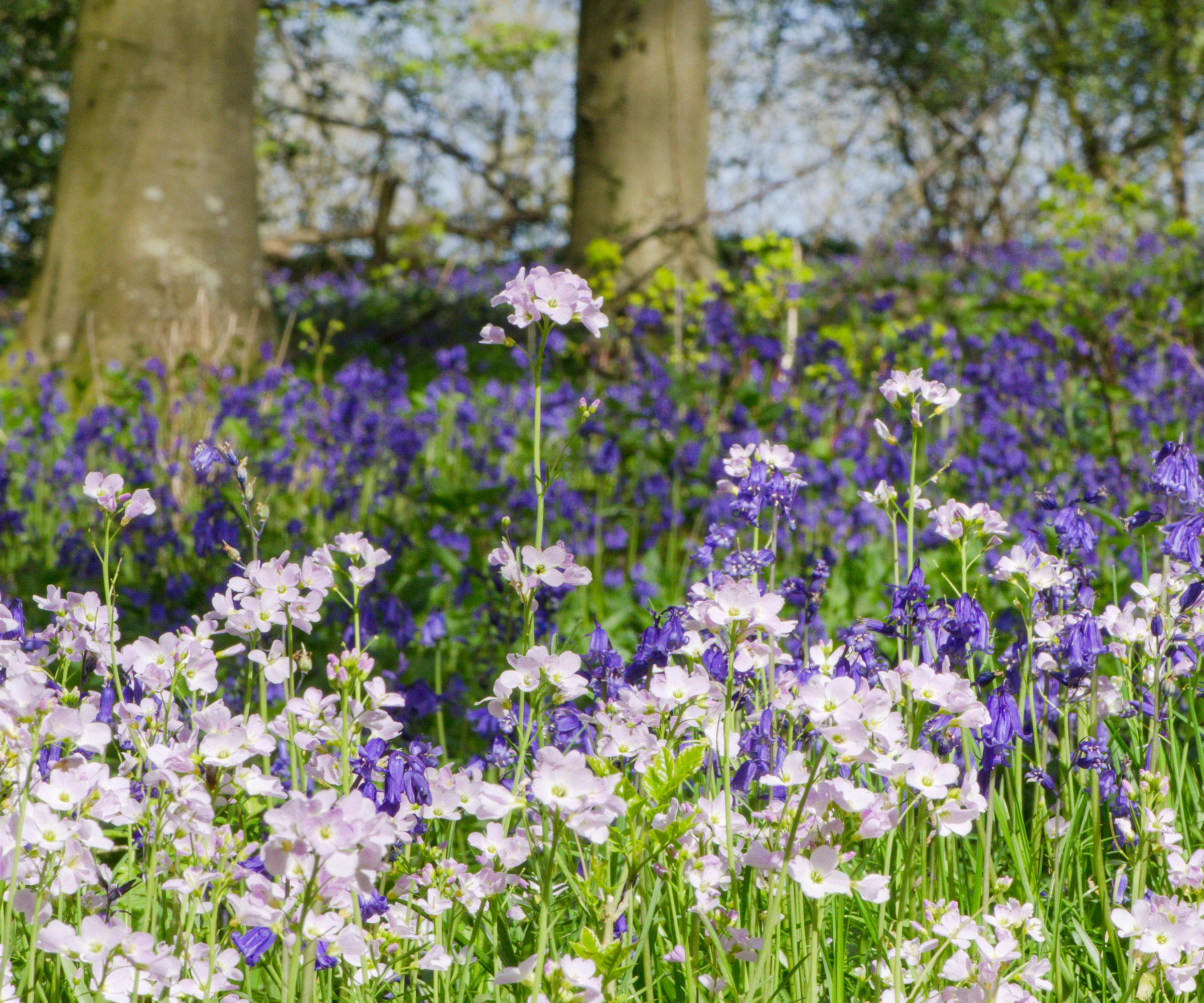
Charmingly known as the cuckoo flower, mayflower and milkmaids, Cardamine pratensis (to give it it’s botanical name) bears delicate, pale lilac flowers on slender, upright stems.
Standing 19 inches (50cm) tall, these undemanding plants adore damp, low-lying or waterlogged areas and can be found around pond margins and riversides.
Rich in nectar, this perennial plant is a favorite food source for bees, moths and butterflies, so the perfect choice when creating a wildlife pond or garden. The dark, ground hugging leaves are rather discreet, making the flowers seem even more magical as they appear to float in the air.
7. Water mint
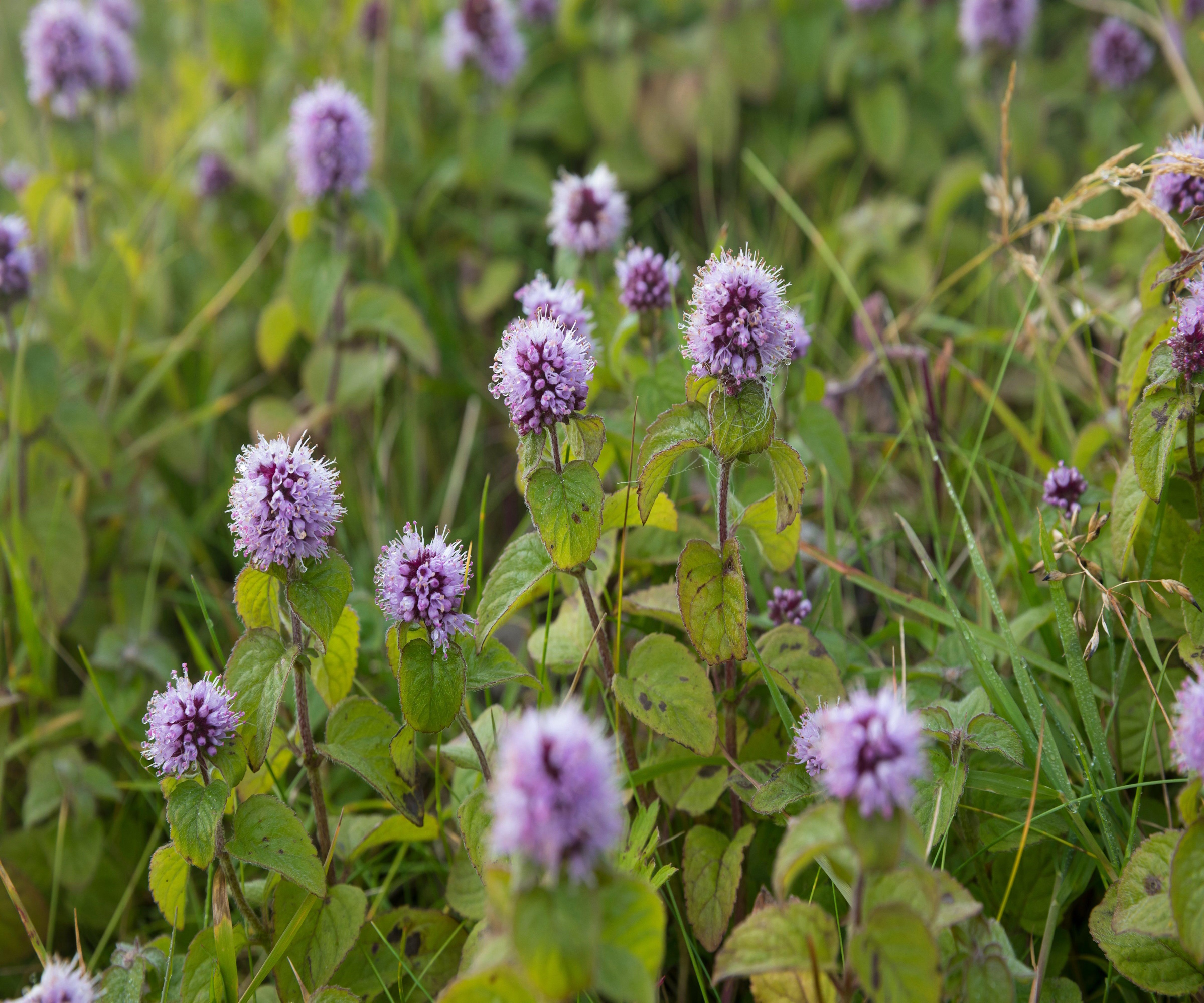
Fast growing and reliably tough – like the rest of the mentha family – water mint is a great flower choice for areas that are prone to flash floods or sudden saturation. One of the best water garden plants, their vigorous mass of creeping stems forms a dense, mat-like structure which helps to anchor the deliciously aromatic crinkled foliage topped with soft, tufty lilac flowerheads.
Flowering mid-summer, from July-August, the mass of nectar-rich blooms are magnets for pollinators and also provide essential shade and shelter for wildlife around pond edges. Keep this vigorous beauty under control by regularly cutting back straying stems. All growth will die back in fall before reappearing next spring.
Hardy in USDA zones 8-11, this creeping plant will reach heights of 12-24 inches (30-60cm) and spread around 3.2ft (1m).
8. Camassia
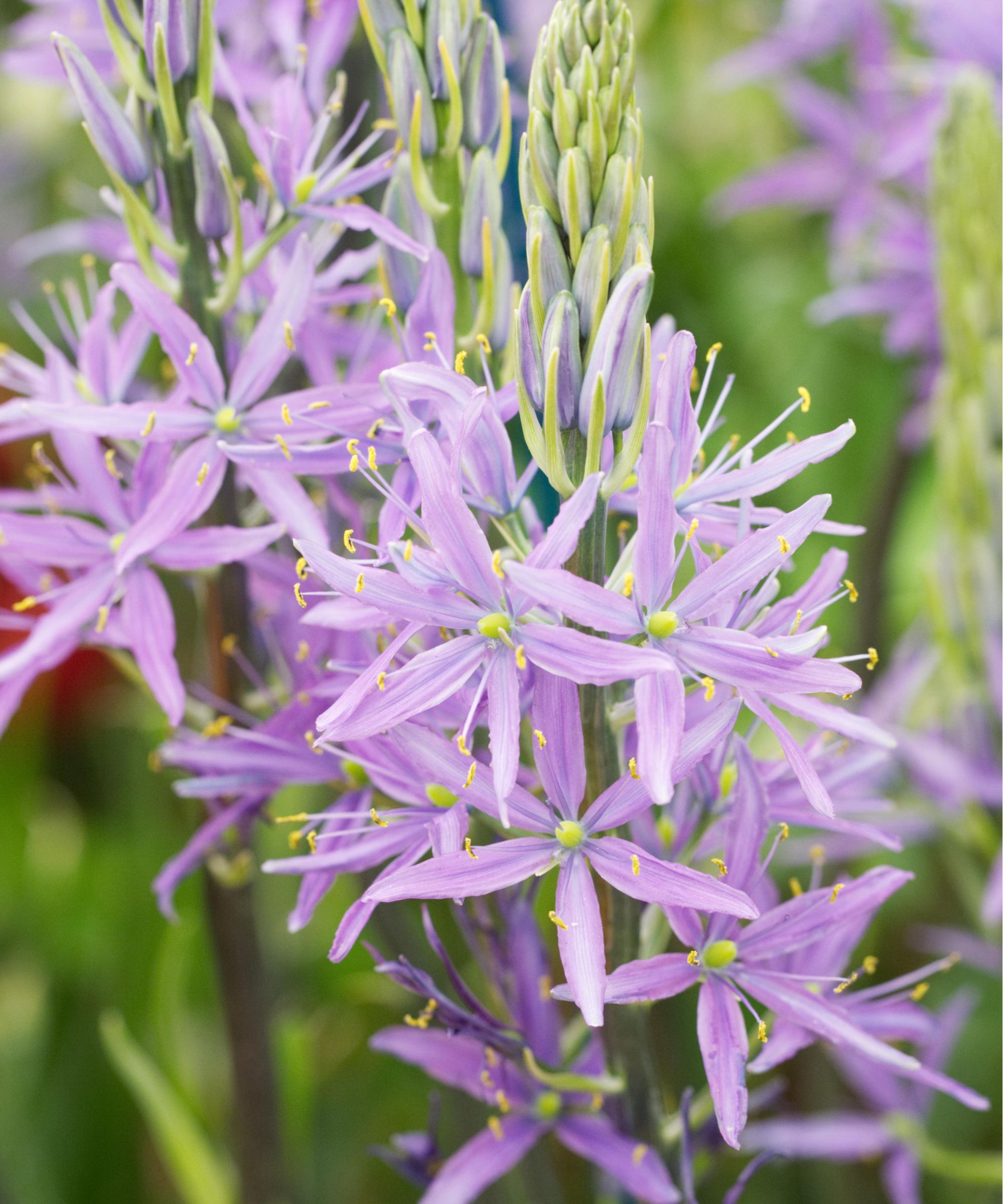
Love the easy going nature of bulbs but have a flood prone plot? Then camassia or wild hyacinths are a nifty choice. Unlike many other flower bulbs, these starry flower spires can tolerate moist soil to a point but will rot if left in waterlogged conditions.
Flowering April to June, the purple-blue or white blooms look stunning planted in large groups, nestled amongst long grass amidst other grassland beauties such as cowslips, campion and slightly more ornate alliums.
A spherical bulb, these plants are best planted in fall at a depth of around 5 inches (12cm) and 9 inches (23cm) deep.
Fascinating varieties to look out for include Camassia leichtlinii 'Sacajawea' with it's slight larger cream flowers and cream edged leaves, plus the shorter Camassia quamash with it's dark blue blooms.
9. Ninebark
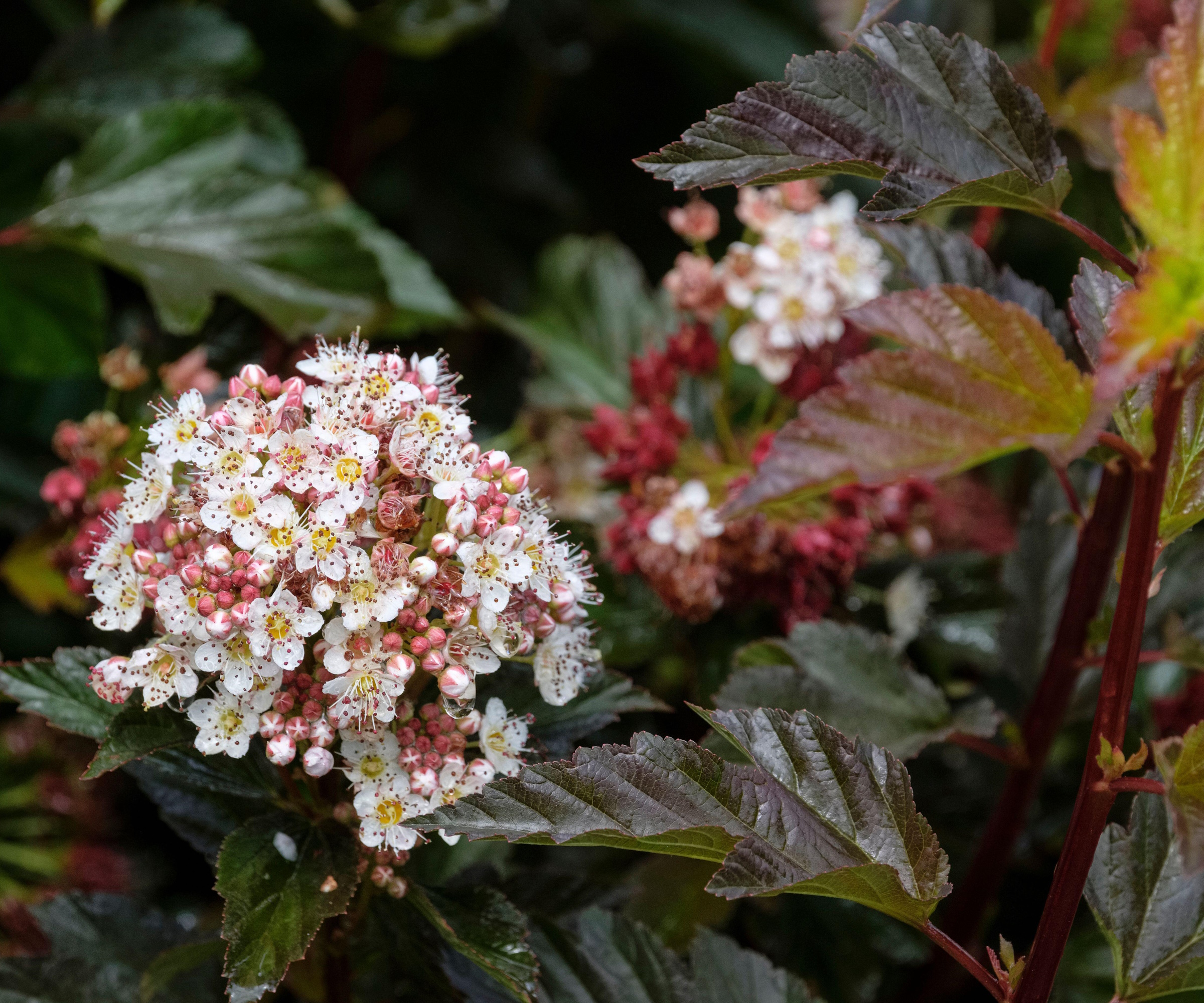
A tough deciduous shrub, Physocarpus opulifolius 'Diabolo' needs little attention and copes well with a wide range of conditions from full sun to part shade. Fairly tolerant of waterlogged soil - it's a wise choice for areas that receive occasional flooding or heavy rainfall - but generally this beauty prefers to sink its roots into damp, humus rich acidic soil.
'Diablo' is a striking cultivar with its rose-white summer blooms standing out against the inky, deep purple foliage.
Perfect for growing in the middle of a border or showcased in a large container, it looks particularly stunning in winter when the bare stems and peeling bark are revealed. The clustered flowers are succeeded by glossy red seedheads in fall.
10. Buttonbush
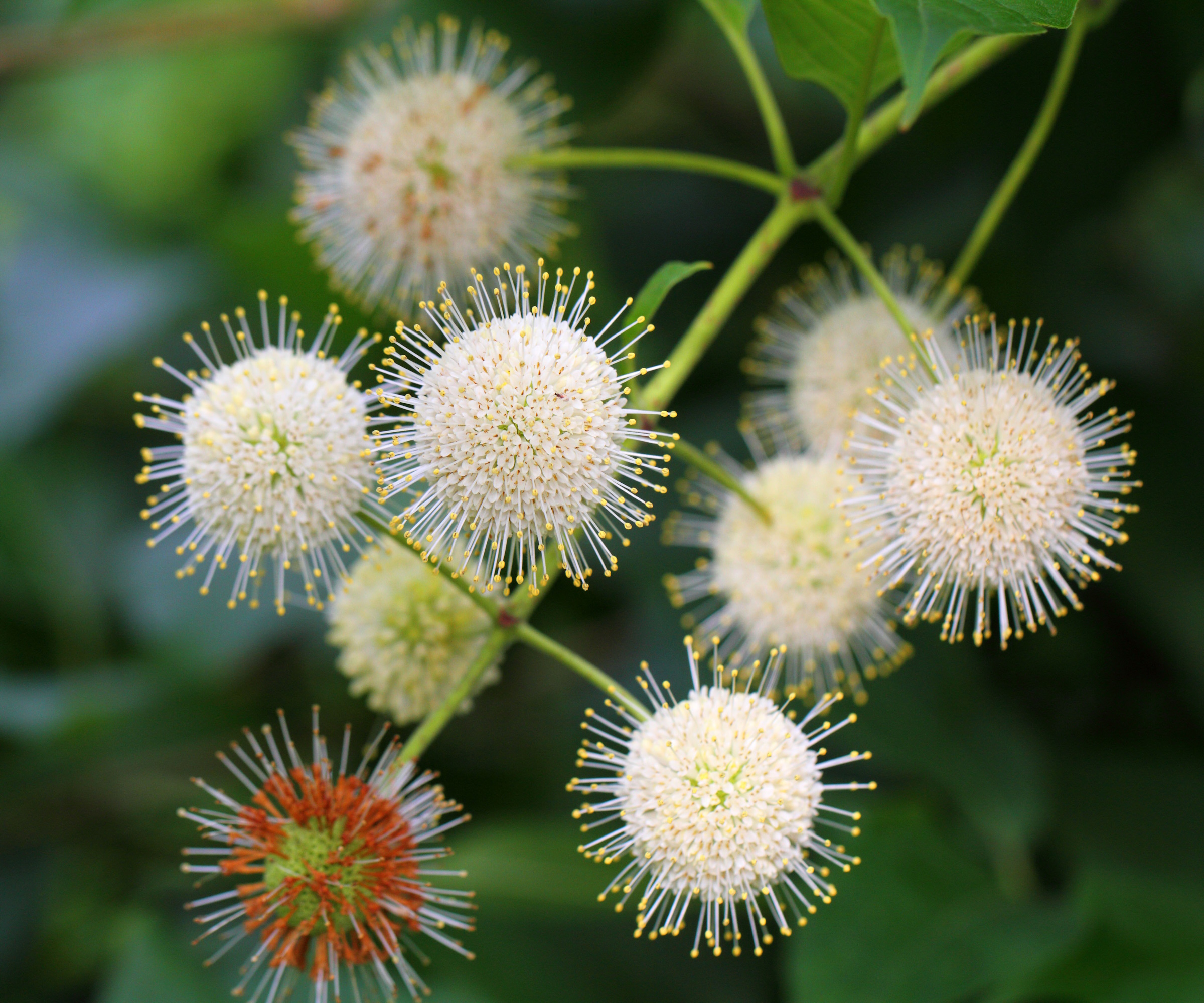
Happiest in wet or boggy conditions rather than dry soil, this Native American is a super stylish choice for tricky locations.
Buttonbush - Cephalanthus occidentalis - is a North American shrub that thrives in wet soils and exhibits exceptional tolerance for flooding. Its natural adaptation to wetland conditions allows it to survive periods of inundation, making it a valuable addition to flood-prone gardens.
Hardy in USDA zones 5-10, this deciduous shrub reaches 3-4ft (90-121cm) tall and puts on a spectacular show in fall with its burgundy tones.
11. Pittosporum tobira
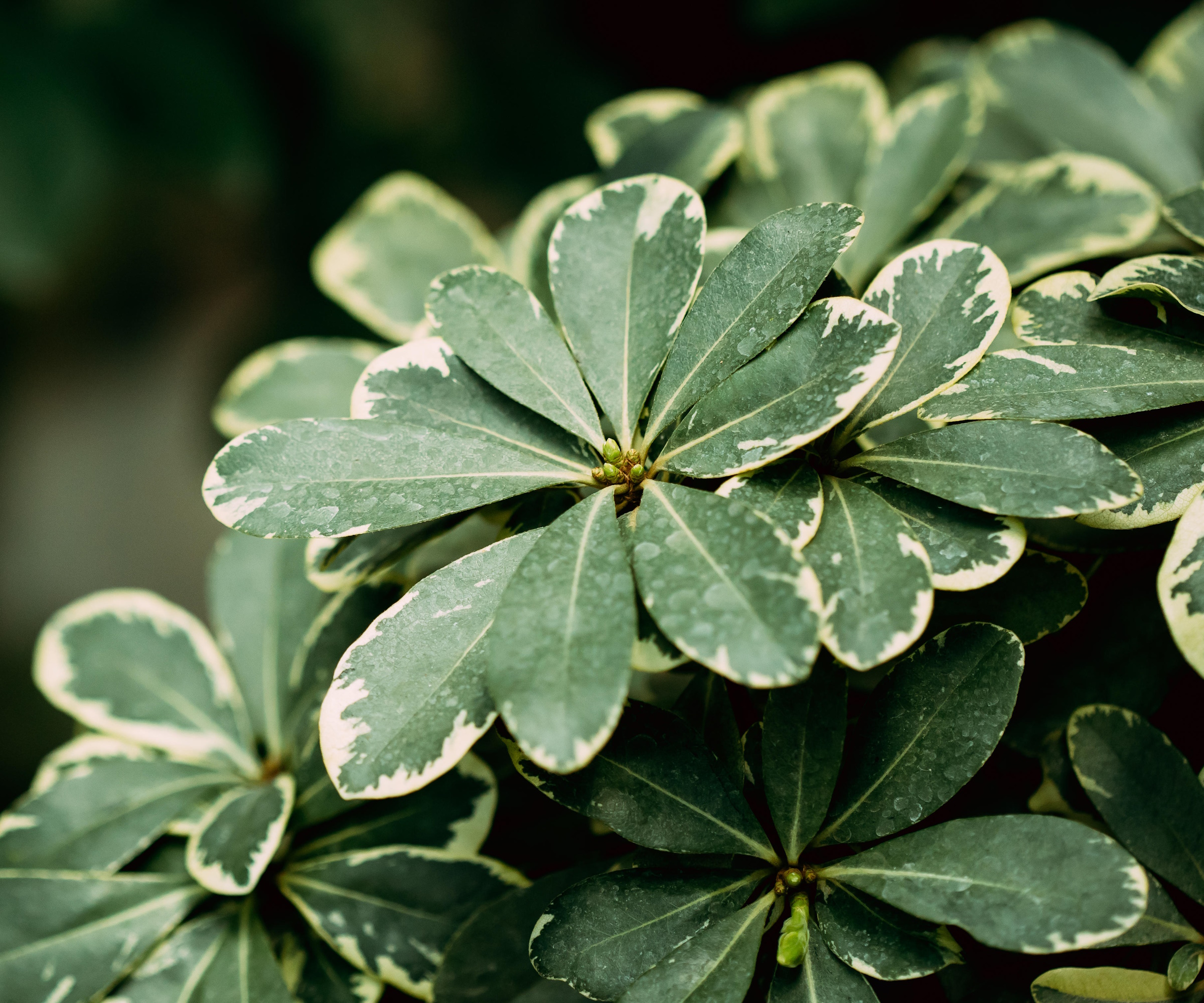
Pittosporum tobira - also known as Japanese pittosporum - is a fabulous shrub boasting dense leathery leaves and clusters of cream fragrant flowers in late spring. Ideal for planting solo in containers or for grounding a border, they will add structure year round but some varieties can be more robust than others.
‘Finding flood resistant plants is tricky enough, but for gardeners living near the coast, salt water adds an entirely new level of complexity when heavy storms or hurricanes cause flooding,’ says Linda Vater, garden expert for Southern Living Plant Collection.
‘Luckily, the dense and dazzling Mojo Pittosporum can tackle these tough conditions with its superior salt tolerance. With variegated foliage in hues of emerald and light yellow-green, this dwarf evergreen makes an attractive hedge or foundation planting, reaching 3’ high and wide when mature.’
This shrub thrives in USDA zones 7-10 in partial sun to shade conditions.
12. Hemerocallis
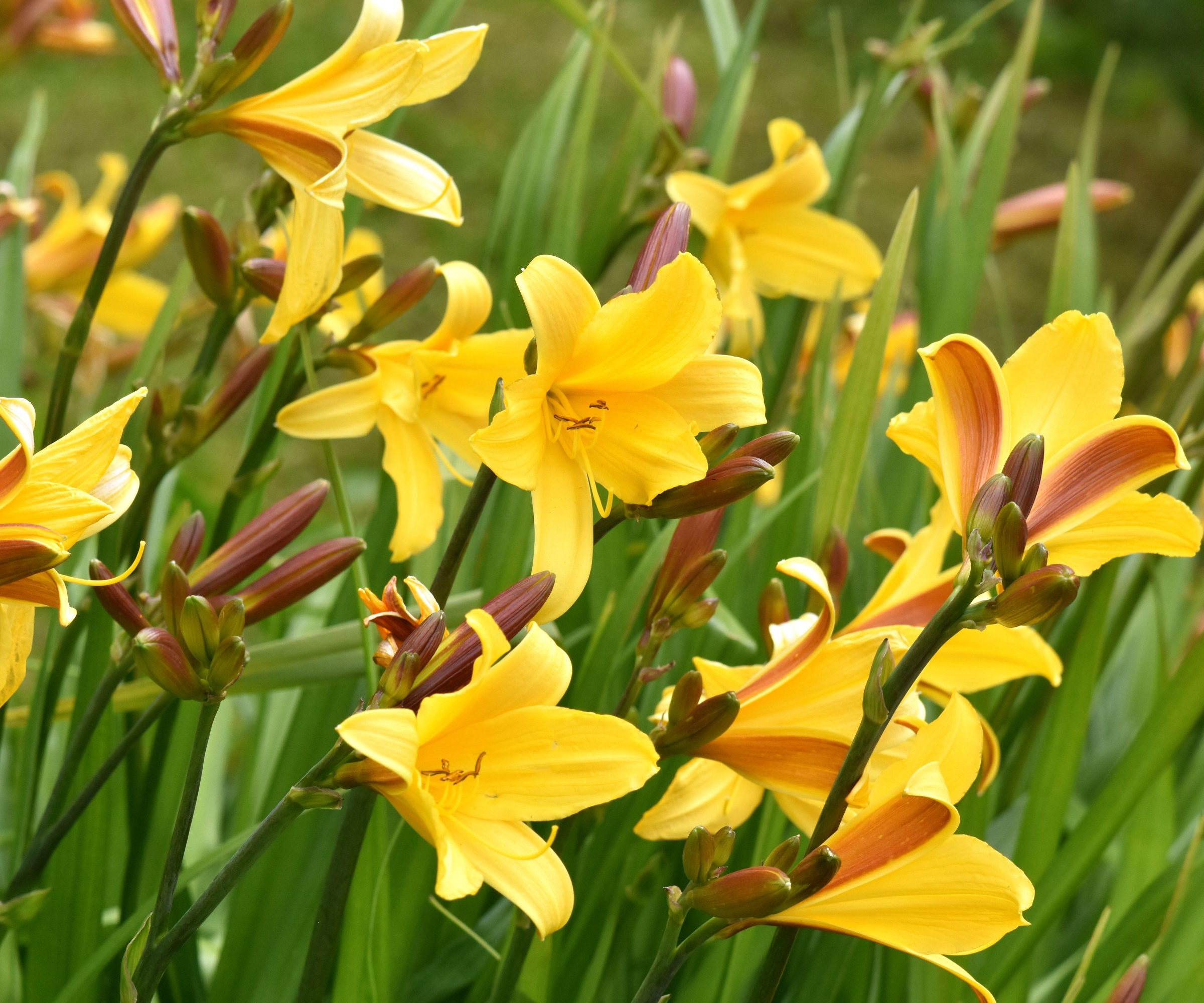
With showy golden blooms that, collectively, last for months on end, this sun-loving perennial is a top performer but is also surprisingly tolerant of changing conditions.
'This evergreen version of Stella de Oro daylily can handle drought as well as flood conditions, making it the perfect pick for tricky spots with poor drainage that could benefit from bountiful blooms and grassy green foliage,' says Linda Vater.
'Offering four seasons of color with its evergreen foliage and reblooming golden trumpet flowers, this low-maintenance bloom brings the added benefits of erosion control and attracting pollinators.'
Hardy in zones 4-10 in full sun conditions, these blooms reaches 10-12” high and wide when mature.
FAQs
Which plants are good for flood prone areas?
Some plants are better at coping with changing climates than others, and when it comes to dealing with occasional flooding it's worth knowing exactly which these are so you can plant accordingly.
Trees such as Amelanchier, Black Elder, Swamp cypress and Sweetgum positively thrive on having wet roots and will add height and drama to any garden. Dogwood, with it's spectrum of colorful stems is surprisingly happy in boggy areas while flowering perennials such as geum, camassia and feathery astilbe also add a dash of charm.
Future proofing your planting to cope with unpredictable rainfall is a wise move and entirely possible to do without completely compromising your garden design. There are many stunning, and readily adapted plants to choose from, including delicate bog garden blooms, tactile grasses to robust shrubs and trees. If you are inspired to plan ahead, its worth exploring these drought planting ideas for borders and pots.







